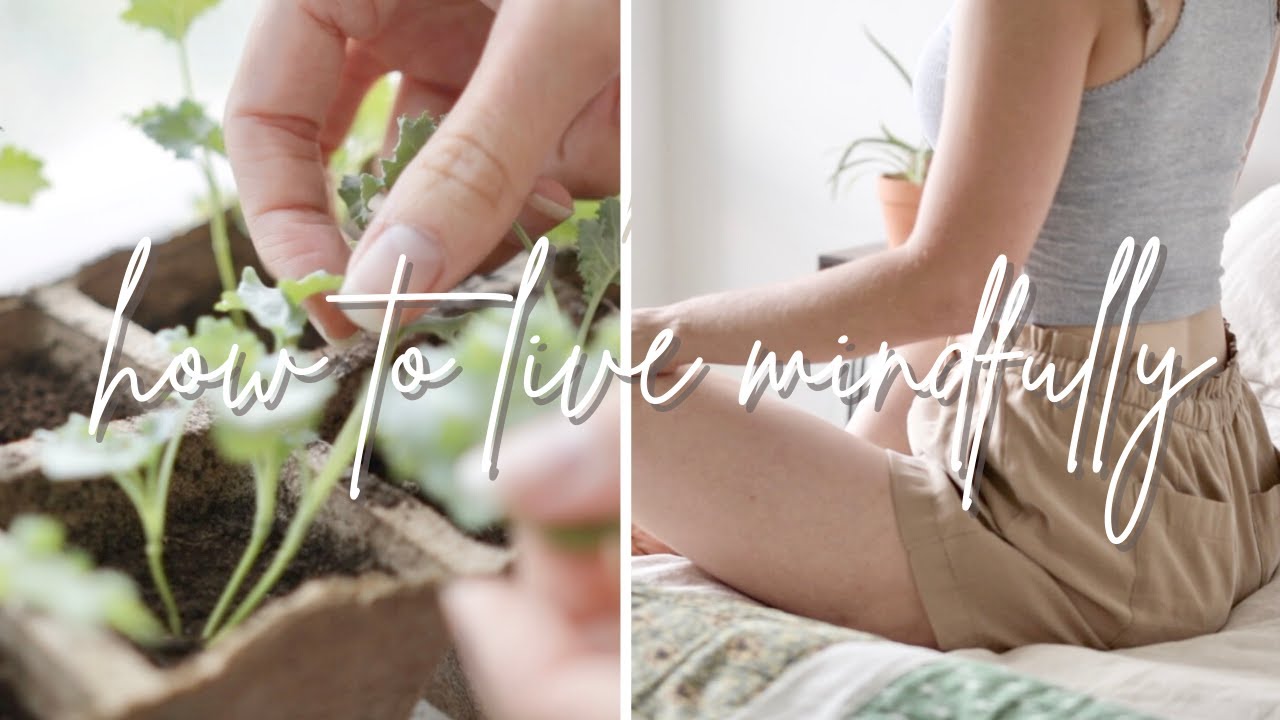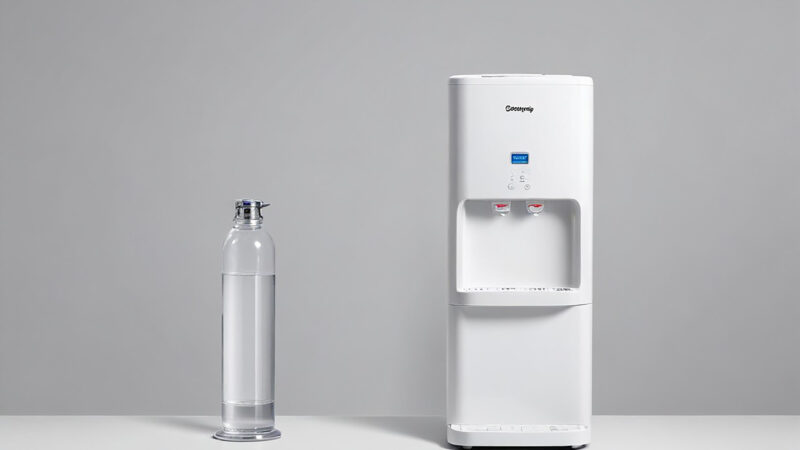Practicing Mindfulness For Healthy Living

A Comprehensive Guide to Living in the Present Moment with Mindfulness
In the fast-paced and digitally connected world we live in, the practice of mindfulness is gaining more recognition and importance. But what exactly is mindfulness, and why is it such a significant aspect of our lives? This comprehensive guide aims to answer these questions and provide insights into how you can incorporate mindfulness into various aspects of your life.
What is Mindfulness and Why is it Important?
Mindfulness is the practice of being fully present and engaged in the current moment, without judgment or distraction. It’s about observing your thoughts and feelings without attaching any meaning to them, helping you to better understand and manage your emotions. Mindfulness is important because:
- It reduces stress and anxiety.
- It enhances overall well-being.
- It improves focus and concentration.
- It fosters self-awareness and emotional intelligence.
The Science Behind Mindfulness
Scientific research supports the effectiveness of mindfulness. Studies have shown that mindfulness can reshape the brain by increasing gray matter, reducing the size of the amygdala (associated with stress), and enhancing the prefrontal cortex (linked to self-awareness and concentration). It also influences the body by lowering blood pressure and improving the immune system.
Practicing Mindfulness
How to Practice Mindfulness Meditation
Mindfulness meditation is a widely practiced form of mindfulness. To get started, follow these steps:
- Find a Quiet Space: Choose a peaceful place where you won’t be disturbed.
- Assume a Comfortable Posture: Sit or lie down in a relaxed position.
- Focus on Your Breath: Pay attention to your breath as you inhale and exhale.
- Observe Your Thoughts: Let your thoughts come and go without judgment.
- Set a Timer: Start with a few minutes and gradually increase the duration.
- Practice Regularly: Consistency is key to reaping the benefits of mindfulness meditation.
Mindfulness Yoga
Yoga is another effective way to practice mindfulness. It combines physical postures with breath control and meditation. By focusing on your breath and bodily sensations, you can attain a state of mindfulness during your practice. The integration of mindfulness and yoga in daily life can lead to increased awareness and inner peace.
Mindfulness in Everyday Life
Incorporating mindfulness into daily activities can be transformative. It’s not just about meditation; it’s about being fully present in every moment. Here are some practical examples:
- While eating, savor each bite and appreciate the flavors.
- When walking, pay attention to your surroundings and the sensation of each step.
- In conversations, actively listen and engage with others.
Mindfulness in Different Aspects of Life
Mindfulness for Work
Bringing mindfulness to your work life can improve focus, reduce stress, and enhance productivity. Techniques like mindful breathing and short meditation breaks can be applied throughout the workday.
Mindfulness for Relationships
Mindful communication is the foundation of healthy relationships. By being fully present in conversations and practicing active listening, you can build stronger connections with others.
Mindfulness for Stress Management
Stress is a common part of life, but mindfulness can help you manage it. By observing stressors without judgment and using relaxation techniques, you can reduce anxiety and maintain a sense of calm.
Mindfulness for Anxiety and Depression
Mindfulness-based therapies have been found to be effective in managing anxiety and depression. By acknowledging negative thoughts and feelings without judgment, you can gain control over your mental health.
Mindfulness for Self-Care
Self-care and self-compassion are crucial for overall well-being. Mindfulness practices, such as self-compassionate meditation and relaxation techniques, can help you care for yourself more effectively.
Mindfulness for Creativity
Mindfulness has the power to unlock your creative potential. By silencing the inner critic and focusing on the present, you can approach problems and projects with fresh insights.
Mindfulness for Children
Teaching mindfulness to children is a valuable gift. Simple practices like deep breathing and guided imagery can help children manage their emotions and improve focus.
Mindfulness for Educators
Educators can benefit from mindfulness practices to reduce stress and enhance their teaching abilities. Integrating mindfulness into classrooms can also create a positive learning environment.
Mindfulness for Healthcare Professionals
In the high-stress healthcare industry, mindfulness can offer a respite. Techniques like mindful breathing and self-compassion practices can help healthcare professionals cope with the demands of their work.
Mindfulness for Social Justice
Mindfulness plays a role in promoting social justice by fostering empathy and understanding. It can help individuals become more aware of social issues and take action for positive change.
Practical Tips for Living in the Present
Mindfulness is not just a state of mind; it’s a way of life. Incorporating mindfulness into various aspects of your daily routine can lead to a more enriched, conscious, and fulfilling existence. Here, we explore practical mindfulness tips for different areas of your life.
How to Be More Mindful While Eating
Eating mindfully is a practice that can transform your relationship with food, leading to better digestion, enjoyment, and overall well-being. Here’s how to make the most of your meals:
- Pay attention to the taste, texture, and aroma of your food: Engage your senses fully as you eat. Take time to savor the flavors, feel the textures, and appreciate the scents. Notice the subtleties in each bite.
- Eat slowly and savor each bite: Instead of rushing through your meal, take your time. Chew your food thoroughly, and pause between bites. This not only enhances digestion but also allows you to fully experience your meal.
- Avoid distractions like screens or reading while eating: Create a dedicated eating environment. Turn off the TV, put your phone away, and focus solely on your food. Mindful eating is about being present with your meal, free from external distractions.
How to Be More Mindful While Walking
Walking mindfully is a practice that connects you with your physical sensations and the world around you. Whether it’s a leisurely stroll or your daily commute, here’s how to be more present while walking:
- Focus on the sensation of each step: Pay attention to the way your feet feel as they connect with the ground. Feel the muscles in your legs working and the rhythm of your steps.
- Observe your surroundings and appreciate nature: Take in your environment with all your senses. Notice the colors, shapes, and details around you. Listen to the sounds of nature or the city, and breathe in the scents.
- Let go of rushing and be present in the moment: Release the need to hurry. Allow yourself to walk at a comfortable pace. Be in the moment rather than anticipating your destination.
How to Be More Mindful While Talking to Someone
Mindful conversations are about giving your full attention to the person you’re speaking with. This not only strengthens your connection but also allows for more meaningful exchanges. Here’s how to be more mindful in your interactions:
- Give your full attention to the speaker: When someone is talking to you, make eye contact and actively listen. Show that you are fully present and engaged in the conversation.
- Avoid interrupting and listen actively: Allow the speaker to express themselves fully before responding. Active listening involves reflecting on what the speaker is saying and asking clarifying questions when needed.
- Practice empathy and understanding: Try to understand the speaker’s perspective and emotions. Show empathy by acknowledging their feelings and experiences.
How to Be More Mindful of Your Thoughts and Emotions
Being mindful of your thoughts and emotions is essential for emotional intelligence and self-awareness. Here are some tips to foster mindfulness in this area:
- Observe your thoughts without judgment: When thoughts arise, simply observe them without attaching judgment. Acknowledge their presence and let them pass like clouds in the sky.
- Label your emotions and try to understand their source: When you experience strong emotions, name them. This simple act can help you gain clarity and distance from the emotion. Explore the source of these feelings, as it can reveal valuable insights.
- Practice gratitude and self-compassion: Cultivate gratitude by acknowledging the positive aspects of your life. Treat yourself with kindness and self-compassion, especially during challenging moments.
How to Be More Mindful of Your Social Media Use
Social media has become a significant part of our lives, but it can also be a source of distraction and stress. Practicing mindful social media use can help you maintain a healthy relationship with your digital life:
- Set limits on your social media time: Establish specific time blocks for social media use. This ensures you don’t spend excessive, unproductive hours online.
- Avoid mindless scrolling and engage intentionally: Before opening a social media app, set an intention. Are you looking to connect with friends, find information, or relax? Engage purposefully and avoid aimless scrolling.
- Unfollow or mute accounts that cause stress or negativity: Take control of your online experience. If certain accounts consistently trigger negative emotions, consider unfollowing or muting them.
How to Be More Mindful of Your Relationship with Technology
In today’s digital age, mindful tech usage can help you maintain a balanced and healthy connection with your devices. Here are some tips:
- Establish tech-free zones or times: Designate specific areas or times in your day as tech-free zones. For example, keep your bedroom free from screens to promote better sleep.
- Turn off notifications to reduce distractions: Limit the constant barrage of notifications by disabling non-essential alerts. This allows you to choose when and how you engage with your devices.
- Be mindful of the content you consume and its impact on your well-being: Reflect on how the content you consume makes you feel. Unfollow or unfriend accounts that contribute to stress or negative emotions.
How to Be More Mindful of Your Impact on the Environment
Mindful environmental practices can reduce your ecological footprint and contribute to a more sustainable world. Here’s how to be more mindful of your environmental impact:
- Reduce waste and practice recycling: Minimize single-use items and recycle materials when possible. Opt for reusable products to reduce waste.
- Conserve energy and water: Be conscious of your energy and water consumption. Turn off lights and appliances when not in use, and fix any leaks to save water.
- Support eco-friendly initiatives and make sustainable choices: Be an advocate for environmental causes. Support local, sustainable businesses, and make choices that align with eco-friendly values.
By incorporating these practical mindfulness tips into your daily life, you can experience a deeper connection with yourself and the world around you. Mindfulness is a powerful tool that can enhance your overall well-being and transform your experiences from mundane to extraordinary. So, take a moment to pause, breathe, and embrace the present—your journey to a more mindful life begins now.
Mindfulness is a practice that offers a multitude of benefits for your mental, emotional, and physical well-being. It’s a tool that can transform your daily life, helping you find peace in the chaos, focus in the distractions, and meaning in the present moment. By incorporating mindfulness into various aspects of your life, you can unlock its full potential and live a more fulfilling and aware existence. So, start your mindfulness journey today and discover the profound positive impact it can have on your life.



